Rockets instead of guns: a way out?
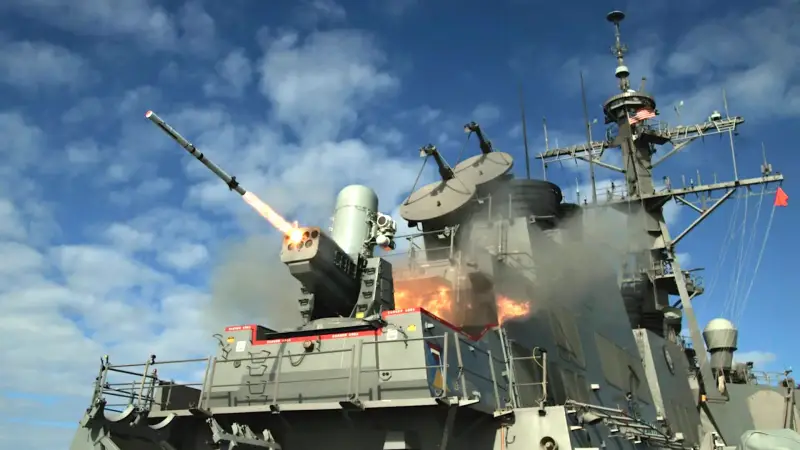
Sometimes you don’t know how to react correctly to such news. On the one hand, the incomprehensible war in the Red Sea is still ongoing, NATO ships are slowly crawling away one after another to lick their wounds and replenish ammunition that was shot at all sorts of Houthi “martyrs,” and the headquarters seem to be drawing conclusions.
And here is one of the last, which causes strange dual sensations. American command fleet plans to add RIM-116 Rolling Airframe Missile (RAM) missiles to the arsenals of its Arleigh Burke-class destroyers to strengthen their defense against cruise missiles, drones and other air and surface threats.
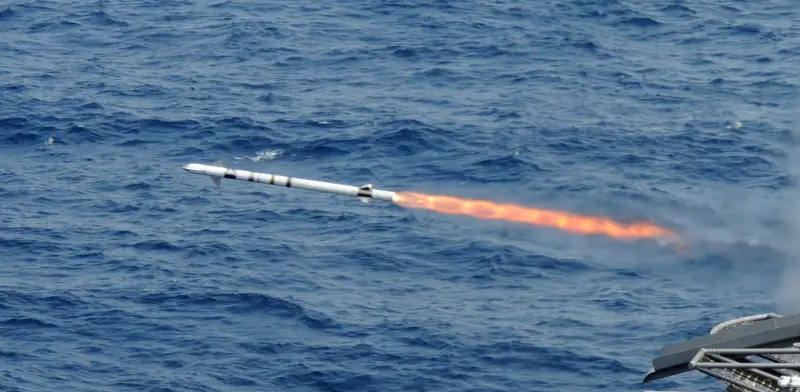
The RAM launchers will replace the existing 20mm Vulcan Mk 15 Phalanx Close-in Weapon Systems (CIWS) cannons, but the exact final configuration will vary depending on the ship subclass.
Strange, don’t you?
In fact, information about the US Navy's plans to install RAM systems on more Arleigh Burke-class destroyers in the coming years was included in the fiscal year 2025 budget request, which was released last month. A small number of destroyers already have the ability to use these missiles; it is up to the modernization of other ships. Let's leave the question of efficiency for now.
Just the other day, Tim Moore, director of the Destroyer Modernization 2.0 program, also known as DDG-51 Mod 2.0 or DDG 2.0, presented information about the work to participants at this year's annual Naval League Maritime Airspace Conference.
The US Navy currently operates 73 Arleigh Burke-class destroyers, divided into three main subclasses (Flights I, II and III). The Flight II subclass itself has several configurations. There is only one Class III currently in service, the USS Jack H. Lucas.
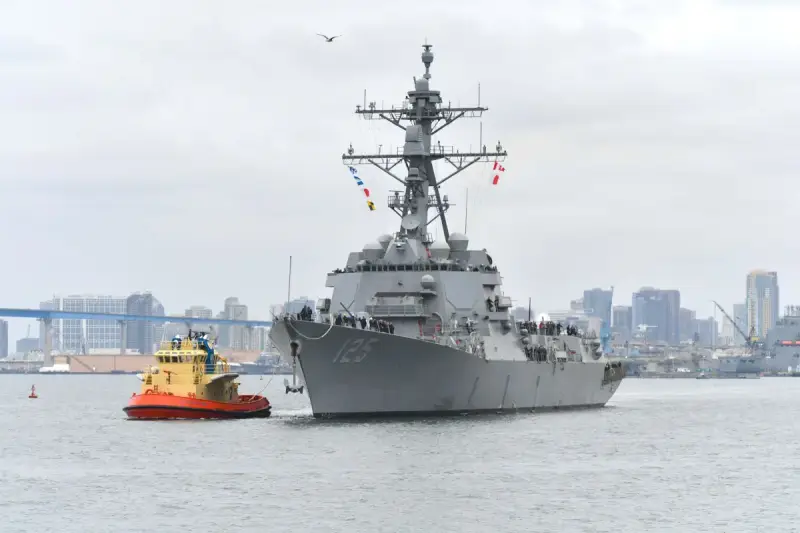
USS Jack H. Lucas
All Arleigh Burke Flight I and Flight II classes, as well as the first seven Flight IIAs, were delivered with two Phalanx CIWS, one forward of the main superstructure and the other towards the stern. All subsequent ships of this class were equipped with only one close-in defense installation, located on the top of the aft superstructure.
“The MK-49 launcher will be used on DDG (Arleigh Burkes) with the latest Aegis 2.0 combat system, and the SeaRAM launcher will be used on ships that do not have a combat system compatible with the MK-49.”, the Navy said in its fiscal year 2025 budget request. In the future, it is really worth replacing all Phalanx close combat systems (CIWS) with missile launchers.
The Mk 49 is a 21-round launcher that is controlled by the combat system of the ship on which it is installed and, accordingly, using all on-board sensors of that ship. SeaRAM, which uses components from the Mk 15 Phalanx, is a stand-alone system that includes an 11-missile RAM launcher, search and track radars, and electro-optical and infrared cameras that also assist in identification, detection and engagement goals.
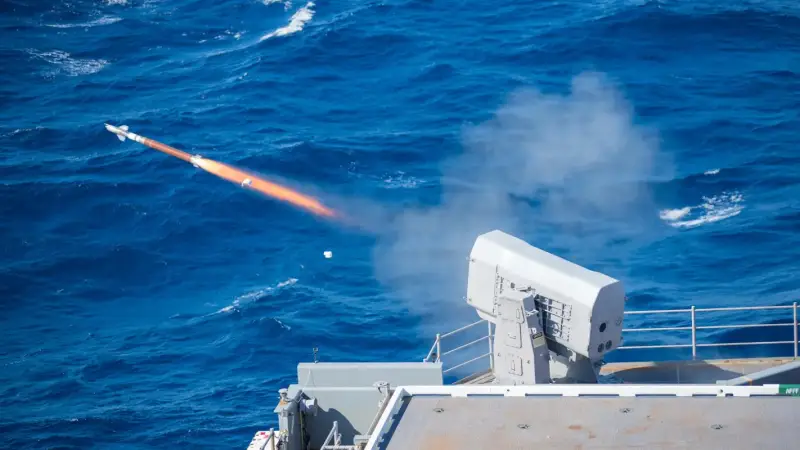
Launch of the RIM-116 Rolling Airframe MIssile missile from the aircraft carrier USS Gerald R. Ford during qualification tests
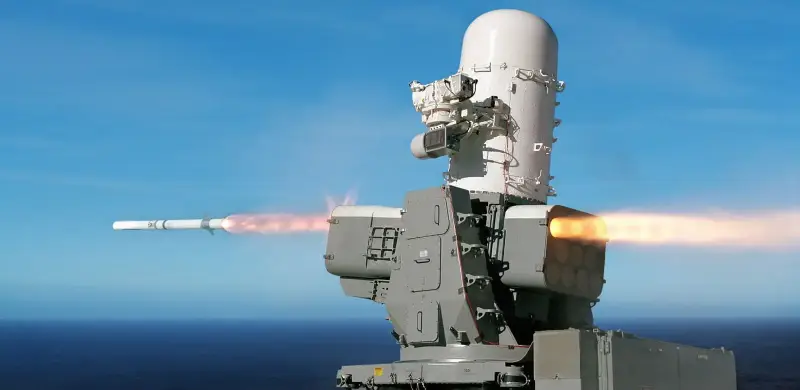
SeaRAM complex
RIM-116 missiles are primarily intended as weapons short-range defense against incoming cruise missiles. RAMs can also be used against other types of air threats, such as unmanned aerial vehicles, as well as against some surface threats, such as small unmanned boats. That is, in principle, everything is in the spirit of the times, a question of efficiency and cost.
The original RAM-116A, which first entered service in 1992, was designed to detect an incoming threat by detecting its radio frequency emissions. That is, the system detected the operation of the radar homing head of the enemy missile and the initial guidance was carried out according to this data, and in the second phase of guidance the RAM-116A switched to its infrared homing head.
The infrared seeker was derived from the FIM-92 Stinger short-range surface-to-air missile, while other components were derived from the AIM-9 Sidewinder air-to-air missile.
In reality, “I molded her from what was there,” but 30 years in the service indicate that it turned out, at least, not bad.
In the early 2000s, the improved RIM-116B RAM Block 1 was introduced, which added an infrared-only targeting mode option to improve effectiveness against non-RF emitting threats, such as missiles with infrared seekers.
The missiles could still be used in the original guidance mode, as well as in a mode in which the missiles were launched with the infrared seekers immediately turned on, but they could switch to a passive radio frequency seeker when a suitable signal was detected.
The Block 1 missiles were followed in 2015 by the RIM-116C Block 2 variant with an even more improved guidance package as well as better overall performance. Since then, additional improved sub-variants of Block 2A and 2B have been developed. The latest, also known as the RIM-116E, has an improved infrared seeker and data link that allows the missiles to jointly intercept threats during a salvo launch.
Money for fish
Today, Mk 49 RAM and SeaRAM launchers are found on a variety of Navy ships, including all Nimitz- and Ford-class aircraft carriers, as well as all amphibious assault ships. As of 2023, at least eight Arleigh Burke have already received SeaRAM, as well as additional electronic warfare capabilities in the so-called "Rota" configuration for destroyers of this class based in Rota, Spain. These ships also retained Phalanx CIWS on their bow mounts.
In recent years, some Arleigh Burke have also received laser optical jammers installed in the pedestal area in front of the main superstructures where the Phalanx was originally intended.
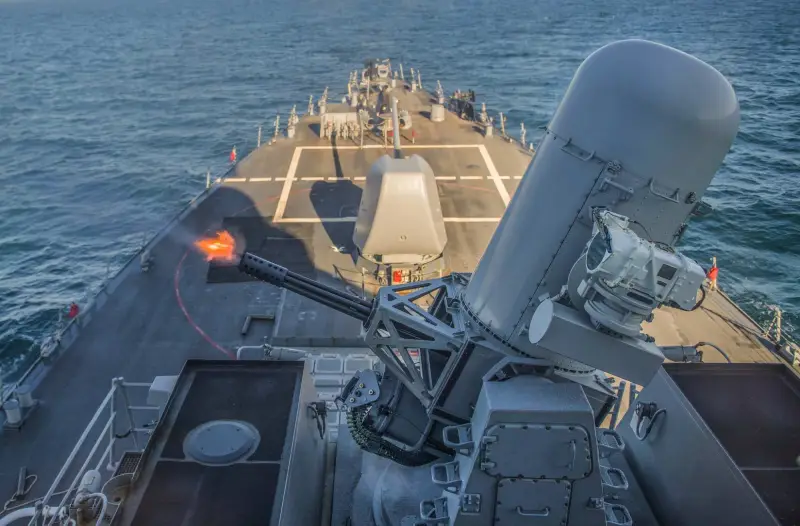
It is unclear whether any remaining Arleigh Burke-class destroyers with two CIWS Phalanx will retain one of these systems, whether they will receive two RAM/SeaRAM launchers (which seems unlikely), or whether one of their Phalanx systems will simply be removed without replacement as part of the modernization process. It's a question of both time and money. Naturally, a lot of money.
The Navy's fiscal year 2025 budget request also outlines only plans for a 72-ship conversion, and it's unclear what the plan might be for the close-in defense configuration on the new Flight IIIs. The service's latest budget request also does not say when the last of these changes is expected to be completed. Apparently, they are still considering how much this carnival will actually cost, if we count in millions of dollars.
RIM-116s do have significant advantages over 20mm rounds fired by CIWS, including when it comes to how far from a friendly ship they can engage a threat and how quickly they can do so. The missiles are extremely maneuverable and fast, which allows them to better hit complex maneuverable and fast targets, the only question is the ability of the ship's sensors to detect and classify targets in time.
However, both the Mk 49 and SeaRAM launchers must be manually reloaded by deck personnel, just like the Phalanx. These launchers have a limited number of missiles ready, especially the 11-missile SeaRAM, which could lead to these systems being overwhelmed in larger attacks, including the use of drone swarms, an ever-growing threat. Iran's latest attack on Israel demonstrated this very clearly and in detail.
And here the question of reload speed and duration of use of weapons arises. The Vulcan cannon as part of the Phalanx complex conducts targeted fire from 20 to 30 seconds at full speed. Then - manual reloading by the crew. SeaRAM is also charged manually, but its use can be extended over time, depending on the appearance of targets. Of course, you can fire all 11 missiles in 20 seconds, or you can do it slower, it all depends on the speed of approach and target detection.
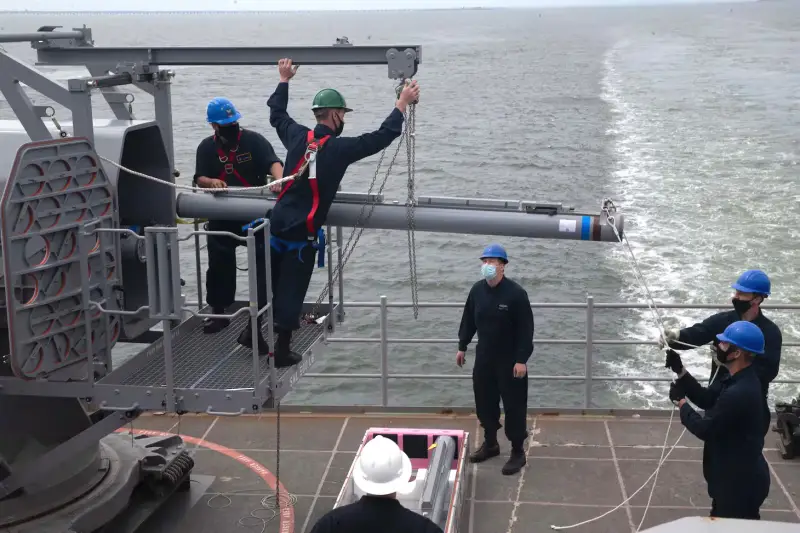
Crew members of the aircraft carrier USS Gerald Ford reload a Mk 49 launcher
Additionally, defensive capabilities such as RAM and Phalanx launchers are intended to be components of a larger, multi-layered array of defensive capabilities and are generally viewed as the last lines of defense. For many U.S. Navy ships, the integration of short- and medium-range RIM-162 Evolved Sea Sparrow (ESSM) missiles has also helped provide additional protection that combines with the last line of defense of close-in combat systems.
Money for fish
The Navy's proposed FY 2025 budget says the service is moving forward with increased "procurement and installation of RAM launchers on in-service DDGs" now "consistent with the recent decision by the Board of Naval Capabilities to equip the class of destroyers." Arleigh Burke "increased protection capabilities."
Not to mention, the Arleigh Burke, like other warships, faces ever-increasing threats from increasingly sophisticated anti-ship cruise missiles, including very fast types like the Russian hypersonic ones. In any future higher-level conflict, especially in the Pacific against China, US naval vessels could see very high levels of use of these weapons.
These capabilities also continue to proliferate, even among non-state actors such as the Iranian-backed Hezbollah and Houthi militants in Lebanon and Yemen, respectively. The creation of the aforementioned Rota configuration was driven primarily by concerns about the threats posed by Russia's latest supersonic anti-ship missiles in and around the Mediterranean Sea.
So far, the “partners” only have concerns that Russian high-speed missiles will end up in Iran, and will go further from Iran. But the bad thing about fears is that they very often become dangers.
Apparent invisibility
Of course, the spread of stealth technology is also a major concern. Everyone has. Although low-flying, subsonic, stealth cruise missiles do not have high speed, they can be very difficult to detect and track on radar. And plastic UAVs and UAVs, which have a minimum of radio-reflective materials in their design, even more so.
This problem becomes much more apparent when it is used as part of a layered attack, in which multiple anti-ship weapons may be aimed at the ship at the same time. The RAM, with its infrared homing head, is well suited to combat stealthy close-in anti-ship missiles that "leak" through the defense network, provided that they can be targeted to the engines of these devices.
After years of being ignored, drones are now fully entrenched in the popular consciousness as another viable threat at sea and beyond. China, in particular, has been very active in developing and deploying drone swarm capabilities to overwhelm adversaries at sea and on land. In the same time drones lower levels, including one-shot kamikazes, may still pose a significant threat. Currently, the US Navy is actively looking for additional anti-drone capabilities for various ships in its fleets, because it’s not just the Arleigh Burke that needs to be protected.
It's hard to speak for the entire fleet, but at least some of the U.S. Navy's Arleigh Burke-class destroyers will receive even more significant defense upgrades and other new capabilities as part of the DDG 2.0 program. This package consists of four components:
- electronic warfare kit AN/SLQ-32(V)7 Surface Electronic Warfare Improvement Program (SEWIP) Block III;
- AN/SPY-6(V)4 radar;
- improved version of the Aegis combat system;
- a new thermal control system to ensure stable operation of all ship electronics.
Four Arleigh Burke Class IIA destroyers are currently undergoing the DDG 2.0 upgrade process:
- USS Pinckney (DDG-91);
- USS Chung Hoon (DDG-93);
- USS James E. Williams (DDG-95);
- USS Halsey (DDG-97).
Visible non-obviousness
Updates are added in two stages. The first phase includes the modernization of the Aegis system and the integration of AN/SLQ-32(V)7. The SEWIP Block III installation includes significant structural changes to the vessel's main superstructure in the form of two large, fully enclosed sponsons on either side. They completely change the appearance of the ship; the modernized destroyer becomes visually recognizable.
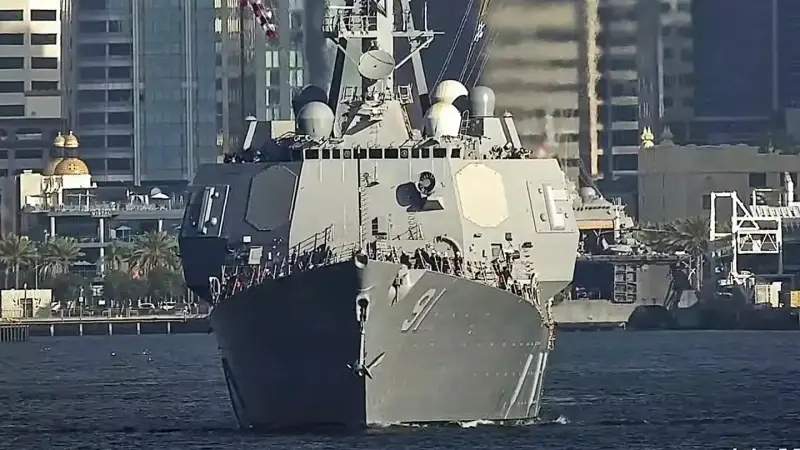
USS Pinckney with the new AN/SLQ-32(V)7 SEWIP Block III electronic warfare system, as evidenced by the massive new sponsons on either side of her main superstructure.
In the second phase, the ships will receive the AN/SPY-6(V)4 radar and what is essentially a huge air conditioner called a High Efficiency Super Efficiency Chiller (HES-C). These upgrades will also require additional structural changes to the ships. The AN/SPY-6(V)4 provides significant performance and reliability improvements over the existing AN/SPY-1D radar on Flight IIA.
HES-C is often not even mentioned in discussions about the DDG 2.0 package, but it is an absolutely critical component. The uninterrupted (and overheating is a very important point in operation) operation of all electronics is more important than the functioning of, say, artillery. Without processing information from sensors, the ship becomes blind, deaf and unable to fight.
The installation of the more powerful SPY-6 radar and the SLQ-32(V)7 electronic warfare system at the first stage went well, but it was necessary to significantly increase the cooling capacity of the ship's climate control systems. The outdated air conditioners that were on board could not ensure uninterrupted operation of both the SPY-6 and SLQ-32(V)7 radars.
This, in turn, raises questions about the overall power generation capacity of the destroyers receiving these upgrades. Concerns about the ability of these ships to support ever-increasing energy demands have arisen in the past.
Here is the Phalanx, which has its own radar, computer complex and control drive system - it’s understandable why they want to get rid of the complex. Missile RAM at least provides certain savings in that it is served by ship sensors, and calculates the ship's combat center, which will work in any case.
The US Navy is currently actively considering not only the Arleigh Burke, but also a new class of future destroyer, currently called DDG(X). However, plans for this program have been delayed, and work on the first phase of DDG(X) is now expected to begin in FY 2032.
Despite this, at the same time, the US Navy's Arleigh Burke-class destroyers will continue to receive upgrades, including various types of RIM-116 missile launchers to further expand their defense capabilities.
What can be said as a result?
A very strange choice. Yes, rockets are more accurate than artillery. Missiles can be guided using their seeker. But how effective missiles are in terms of cost - we already know that there can be no reasonable comparison in cost of one RIM-116 type missile and a fragmentation projectile for a 20-mm cannon. Missiles can be used to disable drones, but machine guns can do this just fine, not to mention automatic cannons.
The question is, what is more profitable: shooting a drone costing $10 with 200 shells costing $30 each and spending $6, or launching a rocket costing $000?
The US Navy command believes that the missile is more reliable. Well, we won’t condemn this approach; after all, they know better what to spend their money on. However, it would be worth noting that if modern missiles were so effective against sea and air drones, then why do many countries begin to stick their ships with missile launchers?
Information